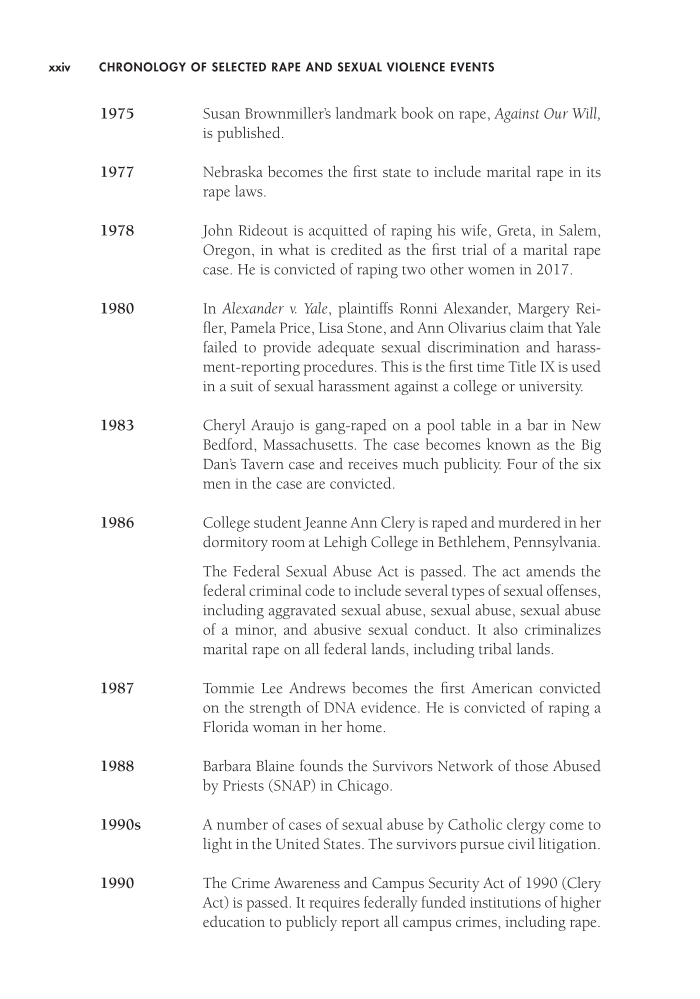xxiv Chronology of Selected Rape and Sexual Violence Events 1975 Susan Brownmiller’s landmark book on rape, Against Our Will, is published. 1977 Nebraska becomes the first state to include marital rape in its rape laws. 1978 John Rideout is acquitted of raping his wife, Greta, in Salem, Oregon, in what is credited as the first trial of a marital rape case. He is convicted of raping two other women in 2017. 1980 In Alexander v. Yale, plaintiffs Ronni Alexander, Margery Rei- fler, Pamela Price, Lisa Stone, and Ann Olivarius claim that Yale failed to provide adequate sexual discrimination and harass- ment-reporting procedures. This is the first time Title IX is used in a suit of sexual harassment against a college or university. 1983 Cheryl Araujo is gang-raped on a pool table in a bar in New Bedford, Massachusetts. The case becomes known as the Big Dan’s Tavern case and receives much publicity. Four of the six men in the case are convicted. 1986 College student Jeanne Ann Clery is raped and murdered in her dormitory room at Lehigh College in Bethlehem, Pennsylvania. The Federal Sexual Abuse Act is passed. The act amends the federal criminal code to include several types of sexual offenses, including aggravated sexual abuse, sexual abuse, sexual abuse of a minor, and abusive sexual conduct. It also criminalizes marital rape on all federal lands, including tribal lands. 1987 Tommie Lee Andrews becomes the first American convicted on the strength of DNA evidence. He is convicted of raping a Florida woman in her home. 1988 Barbara Blaine founds the Survivors Network of those Abused by Priests (SNAP) in Chicago. 1990s A number of cases of sexual abuse by Catholic clergy come to light in the United States. The survivors pursue civil litigation. 1990 The Crime Awareness and Campus Security Act of 1990 (Clery Act) is passed. It requires federally funded institutions of higher education to publicly report all campus crimes, including rape.
Document Details My Account Print multiple pages
Print
You have printed 0 times in the last 24 hours.
Your print count will reset on at .
You may print 0 more time(s) before then.
You may print a maximum of 0 pages at a time.


























































































































































































































































































































































































































































































































































































































































































































